We all know that women love Champagne.
And women love making… Champagne also!
Notable women in Champagne’s history include:
- Lily Bollinger
- Louise Pommery,
- Marie-Louise Lanson de Nonancourt,
- Mathilde-Emile Laurent-Perrier and
- Barbe-Nicole Ponsardin of Veuve Clicquot
Throughout the history of Champagne, women have held important roles; today. Important, influential and inspiring women in Champagne include:
- Maggie Henriquez, CEO of Krug.
- Vitalie Taittinger at Taittinger
- Anne-Charlotte Amory, CEO of Piper-Heidsieck
- Cecile Bonnefond, current president of Veuve Clicquot Ponsardin
- Nathalie Vranken, manager of Vranken-Pommery;
- Floriane Eznak, cellar master at Jacquart;
- Isabelle Tellier, cellar master at Champagne Chanoine Frères and De Venoge
- Anne Mallasagne co-owner of Champagne AR Lenobl
There’s many more women who are important in different ways: I wrote about Elodie D who I interviewed last summer who is the fourth women to make her families wines and who bought a building in Epernay 20 years ago and recently renovated it for their tasting room and they rent an apartment in the building too.

And then there’s Caroline Henry. who is an expert on Champagne’s terroir, and the region’s organic and biodynamic wines. Caroline introduced me to the wines of Francoise Bedel, the first biodynamic female winemaker in Champagne. You can order Caroline’s book Terroir Champagne: the Luxury of Sustainable, Organic and Biodynamic Cuvees atTerroirchampagne.com, where she will confirm your order and ask if you want it dedicated; all 3000 books are signed and numbered and are printed on recycled paper.
As you have probably noticed by now, March is Women’s History Month and as you may have guessed by my introduction to this article, the French Winophiles are celebrating by highlighting Women in Champagne with host Julia Coney.

Here on Wine Predator, we are featuring the wines of two important businesswomen, one from the past and one from today:
- Barbe-Nicole Ponsardin of Veuve Clicquot
- Anne Mallasagne co-owner of Champagne AR Lenoble
As I mentioned on International Women’s Day, many women in wine work with a partner — and that partner is often a spouse as we also discussed in our post about Cabernet Franc. Of course MEN also work with female partners (ahem). But in the widow’s case, her partner died, and for AR Lenoble, it’s a team of siblings.
I opened the book about the Widow Cliquot by Tilar J. Mazzeoby and a bottle of Veuve Clicquot for International Women’s Day, and then took both on a campout to Refugio State Beach where I paired the wine with raw oysters, halibut and pesto: fabulous! Exactly what you’d think of when you think CHAMPAGNE.
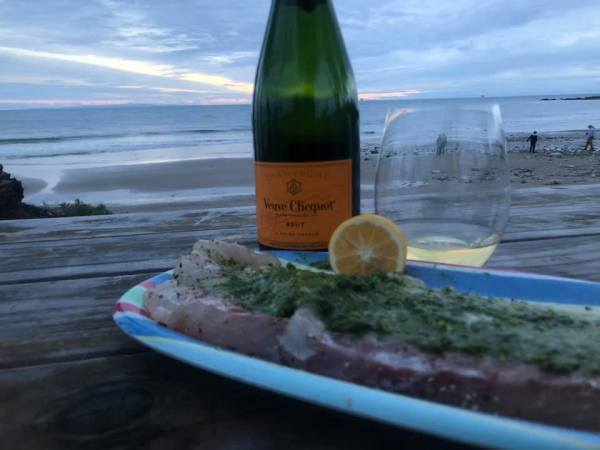
Barbe-Nicole Ponsardin was born in Reims, in the heart of Champagne, and grew up in a wealthy influential family where her father served as mayor as appointed by Napoleon. At 21, she married François Clicquot. Together they managed various businesses including a champagne house until he died six years later leaving her a widow (or veuve in French) and leaving her in control.
In The Widow Clicquot: The Story of a Champagne Empire and the Woman Who Ruled It, Tilar J. Mazzeo writes: “Widowed at the age of twenty-seven, with no formal business training and no firsthand experience, Barbe-Nicole transformed a well-funded but struggling and small-time family wine brokerage into arguably the most important champagne house of the nineteenth century in just over a decade.”
The widow focused on champagne, and developed the technique known as riddling which entails turning the bottles upside down so that the dead yeast lands in the neck of the bottle which was then frozen so it could be removed. Additional wine is added to refill the bottles. (I’m excited to be learning about this first hand at my winery internship with Bruce Freeman at Clos des Amis! See photos here.)
Under her direction, Champagne moved from being an icy sweet slurp of a beverage with bubbles like “toad’s eyes” to something that it is more similar to the beverage we know and love today.
The widow is also credited with inspiring the strategy of sabering to open a bottle of sparkling wines. As Tilar J. Mazzeo tells it, “The French troops wasted no time in celebrating their victory, either. There is a legend, in fact, that it was during these days that the art of sabrage—opening champagne bottles with military sabers—was invented. According to the story, “Madame Clicquot…in order to have her land protected, gave Napoléon’s officers Champagne and glasses. Being on their horses, they couldn’t hold the glass while opening the bottle.” So they lopped off the necks of the bottles with their swords, and sabrage was born.”
While the book is a well written best seller and a must read for anyone who loves Champagne or for Francophiles, I was much more delighted by the style and the stories about Provence that I read last month. But I’m not done yet and maybe it will grow on me.
A few days after my visit with the Widow, Sue and I opened a bottle of AR Lenoble that had came highly recommended to me by a somm I knew who was also at the WineHouse LA.
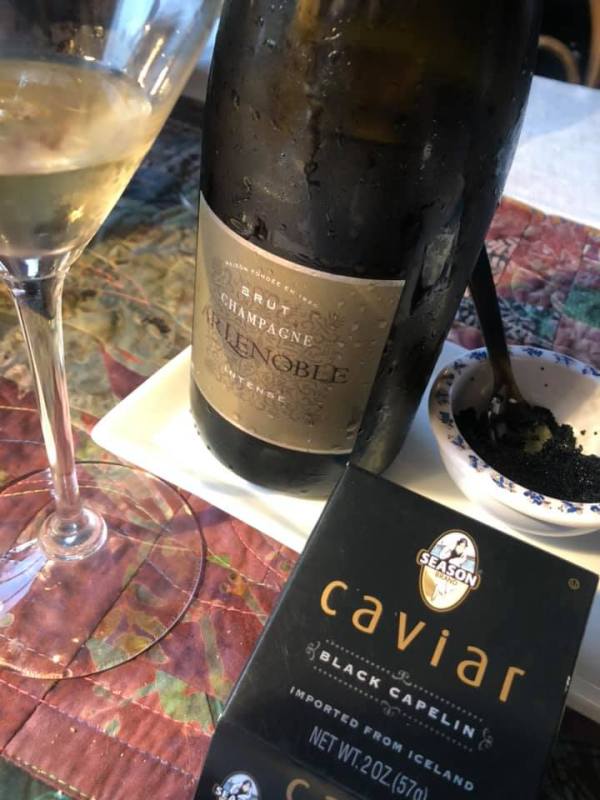
AR Lenoble is a company 100% family owned and managed by Anne Mallasagne and her brother Antoine. For the past 25 years or so, they’ve transformed the business with Antoine focused on the vineyards and the winemaking while Anne does administrative management and communication.
Anne Mallasagne is also a co-founder of La Transmission for women of Champagne; in order to “share the experience of women in the business.”
According to an article A Glass of Bubbly, “the group does not seek to promote their individual wines or brands, though the quality across the board is superlative, even by the strict standards in Champagne. “It’s not a comparison, it’s a cooperation,” said Mallasagne. “We want to create a space for women in the industry.”
“We share tradition, value, quality, and story telling,” she continued.”
The diverse members include a veritable who’s who of houses great and small worth learning more about and tasting. In addition to Anne Malassagne and co-founder Vitalie Taittinger, the other members of the group of ten women are:
- Alice Paillard (Champagne Bruno Paillard),
- Maggie Henriquez (Champagne Krug),
- Floriane Eznack (Champagne Jacquart),
- Delphine Cazals (Champagne Claude Cazals),
- Evelyne Boizel (Champagne Boizel),
- Chantal Gonet (Champagne Philippe Gonet),
- Mélanie Tarlant (Champagne Tarlant),
- Marie Gillet (Champagne Veuve Devaux).
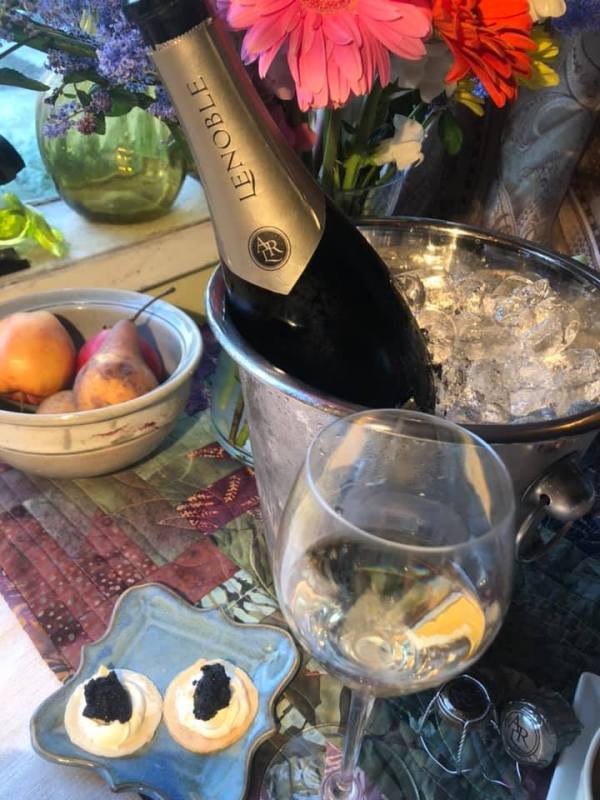
AR Lenoble 12% alcohol – SRP $40
Appearance: Light gold, delicate persistent bubbles
Nose: Earthy funk, yeast, sourdough, fermented grapes; it smells like you are deep in a wine cellar. Much of the funk blew off quickly; perhaps I’ve had the bottle a little longer than it should — I think I bought it three years ago and MOST Champagne is made to be enjoyed soon after purchase as I learned with a bottle of Cristal that I held for a few too many years…
Palate: You would never think this was anything but Champagne– it’s a benchmark for your palate. A very interesting and engaging wine, it is definitely worthy of attention and not just a toast. This wine is very yeasty in style, there are no subtle flavors or smells.
Pairing: So wonderful with caviar; we imagine it would be perfect with oysters as well. Sue didn’t want to leave this part of the meal. Caviar, like oysters, are not that expensive. Sue found the caviar at Grocery Outlet for $2.99. You can also find it at Cost Plus for an affordable price. It may not be the same quality of super expensive caviar, but when it comes right down to it, the taste is amazing when paired with the champagne and can be affordable. Also very nice with a fresh goat cheese and we enjoyed the salad with it also.
I wasn’t too sure if I was going to like the fennel and fish packets because I don’t like licorice but it was a hit: the fennel cooked is more subtle, like fennel pollen. Sue also used some leftover chanterelles I brought home from my lunch the day before at Industrial Eats in Buellton, and I definitely preferred it this way.
These parchment packets are so fun and easy to prepare, says Sue; the fish stays so moist and delicious; It is a must try recipe for fish lovers.
Halibut 3 ways: with nasturtium pesto, with n parchment paper 2 ways: with fennel and with chanterelles
For one fish packet, Sue sliced some fresh fennel and lemons and placed them on the bottom of the parchment paper, She lightly salt and peppered both sides of the fish and placed it on top of the bed of fennel and lemon, then put two to three thing slices of butter on top with a tablespoon of white wine. fold the parchment paper on the top, then fold in both ends. Cook in a 400 degree oven for 12 to 18 minutes.
Of course, buying a fish right off the boat and having the fisherman clean it for me makes for some fabulous fresh fish no matter how we prepare it!
We served the fish on a bed of brown and wild rice along with a green salad with fresh fennel, goat cheese, tangerines, and sunflower seeds with a garlic balsamic vinegar.
So what are the other Winophiles up to? Check out these posts — and you’re inked to join our 8am Pacific Saturday chat using the hashtag #Winophiles.
-
- Host Julia from Julia Coney.com speaks on “Women of Champagne Making Shift Happen”
- Pinny from Chinese Food & Wine Pairings whips up “Women Who Make Champagne AND Woman Who Helps Us Learn About Champagne #Winophiles #tastelikehappy”
- Cynthia and Pierre from Traveling Wine Profs talk about biodynamics with “Biodynamic Grower Champagne with Make-Your-Own Sushi Dinner”
- Martin from Enofylz Wine Blog writes on overcoming with“Overcoming the Odds Twice – The Women of Champagne Duval-Leroy”
- Gwendolyn from Wine Predator talks about champagne with halibut with the “Wonderful Women of Champagne and Halibut 3 Ways for #Winophiles”
- Jill from L’Occasion writes about “Working With the Classics: Advice from Women in Champagne”
- Robin from Crushed Grape Chronicles asks the question, “Where Are the Women in Champagne?”
- Camila from Culinary Adventures with Camila makes you hungry with “Glazed Beet & Burrata Toasts + Alice Paillard”
- Nicole from Somm’s Table talks frommage with “Champagne Dames, Lamiable Extra Brut, and a Hot Cheesy Mess”
>
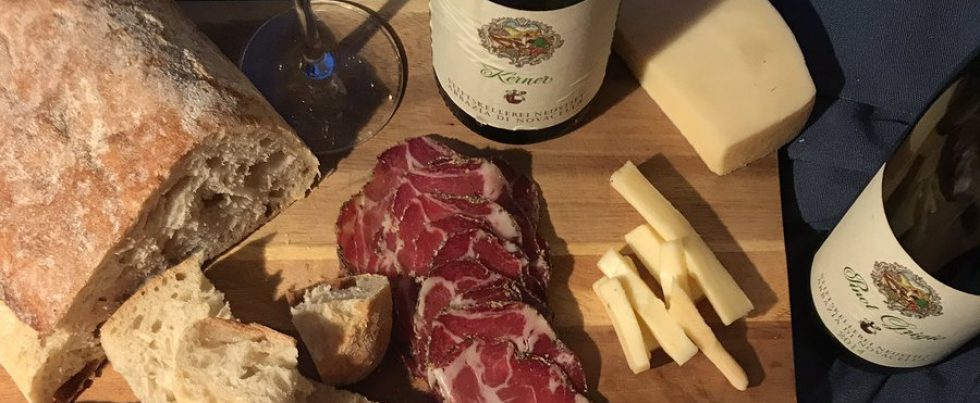

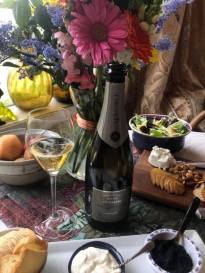





Veuve Clicquot and AR Lenoble plus halibut cooked in 3 ways – delicious pairing! Didn’t know you are friend of Caroline Henry too.
LikeLiked by 1 person
Yes I met Caroline at WBC 12 in Portland and we hung out after spending a day racing around tasting and she drove me to PDX!
LikeLike
Now that is an amazing spread. I also like champagne on a plain Lay’s potato chip with caviar. Decadent and delicious.
LikeLiked by 1 person
I have heard about that idea! Champagne pairs so well with salty and fried foods! PS Potato chips and chardonnay is really good too!
LikeLike
Pingback: Overcoming The Odds Twice – The Women of Champagne Duval-Leroy #Winophiles – ENOFYLZ Wine Blog
A great read, full of inspiration for additional great reads! And what a pairing (food wine AND location!)
LikeLiked by 1 person
What a meal! And got us curious about the terroir Champagne book. Interesting publishing strategy, too!
LikeLiked by 1 person
Yes! We had fun doing different recipes with halibut which we’d never cooked before and it really went well with Champagne. Definitely check out Caroline’s writing!
LikeLiked by 1 person
Thank you! Yes when we decided to go camping I knew I’d get some good wine and food photos! Too bad it was too dark when the fish was cooked– the time changed that night! . I thought I was going to get more reading done but a bit cold, rainy, and again lost an hour due to the time change.
LikeLike
These pairings look amazing! And love all this great info. I also really enjoyed the Window Clicquot book. It’s a fast and fun read on a really interesting woman
LikeLiked by 1 person
Thank you! I’m still reading the book and looking forward to learning more. My goal is to read a book a month about wine and connect it to a blog post! I thought about Caroline’s book but decided instead to do the Widow and her wine with food.
LikeLike
Pingback: Biodynamic grower Champagne with make-your-own sushi dinner #Winophiles – Traveling Wine Profs
A wonderful read Gwen. And, as always, delectable pairings
LikeLiked by 1 person
Thank you Martin! Inspiring topic for sure!
LikeLike